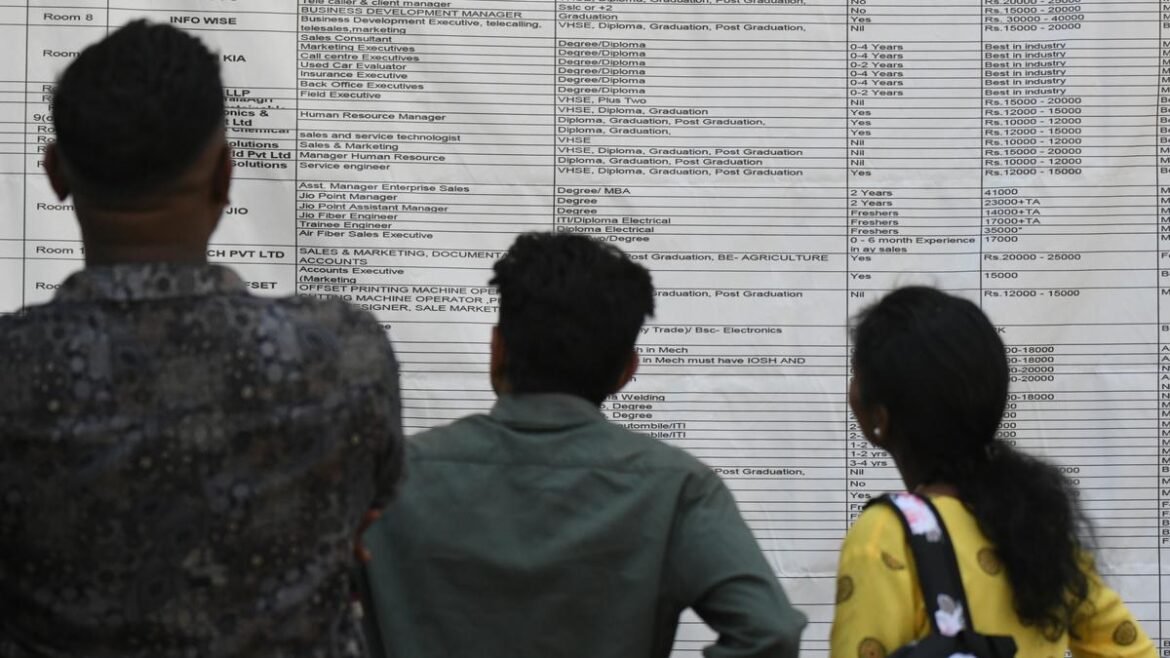Youth around the world find it tough to get a job: ILO report
Recovery after the COVID-19 pandemic has not been universal, with women and minorities struggling more than others, it notes

The report found that in low-income countries, only one in five young adults aged 25 to 29 manage to find a secure paid job.
| Photo Credit: Thulasi Kakkat
Young people around the world are unable to find secure work and their chances of finding a job decrease as the income level of the country they reside in decreases, said the International Labour Organisation’s (ILO) Global Employment Trends for Youth 2024 report released in Geneva on Monday.
It cautioned that the number of 15- to 24-year-olds who are not in employment, education or training is concerning and that the post-COVID-19 pandemic employment recovery has not been universal. “Young people in certain regions and many young women are not seeing the benefits of the economic recovery,” the report said.
Also Read:Employment scenario in India grim, says ILO report
The report found that in low-income countries, only one in five young adults aged 25 to 29 manage to find a secure paid job — a job with a paying employer and a contract greater than one year in duration. The share of young adults working in a secure paid job is significantly higher in high-income countries (at 76% in 2023) but the report added that the incidence of temporary work has risen in those countries too. “The global trend towards the casualisation of labour serves as a source of increasing anxiety among young people striving to move towards financial independence and the next stages of adulthood,” it noted.
In Asia and the Pacific region, youth unemployment rate was at 13.9% in 2023 and the ILO said it reflected a full recovery from the crisis years and fell below the rate of the pre-crisis years. “But trends diverge by subregion with positive signals of declining youth unemployment and rising employment ratios in South Asia, the contrary in East Asia and with the job situation for youth in South-East Asia and the Pacific falling somewhere in the middle. The youth unemployment rate of 14.5 per cent in 2023 in East Asia was a historical high,” the report said.
In finding work, young men have had greater success than young women during the recovery period. “While the youth unemployment rate of young women remained still 1 percentage point above the pre-crisis rate in 2023 (at 13.4%), the rate of young men had fallen by 0.7 points,” the report found.
The rate of youth not in employment, education or training has declined from 2019 in all Asia-Pacific subregions, but the exceedingly high rate among young women in South Asia (at 42.4%) means, on the aggregate, still one in five (20.4%) youth in the region was in ‘not in employment, education or training’ status in 2023, the report said. “The gender gap in youth not in employment, education or training rates in South Asia, at 31 percentage points, was higher than in any other subregion of the world. By 2025, the youth unemployment rate in the region is expected to continue its decline to 13.7%. But the region’s youth NEET rate is expected to creep up again very slightly to 20.5% (from 20.4% in 2023),” the report said.
ILO sees structural imbalances in global labour market
The share of young adults in Asia and the Pacific working in temporary jobs has increased from one in five to one in four since the start of the millennium. “By 2021, only the subregion of South Asia still had the agricultural sector as the largest employer of young people (at 35%),” the report said.
“None of us can look forward to a stable future when millions of young people around the world do not have decent work and as a result, are feeling insecure and unable to build a better life for themselves and their families. Peaceful societies rely on three core ingredients: stability, inclusion, and social justice; and decent work for the youth is at the heart of all three,” said Gilbert F. Houngbo, ILO Director-General, commenting on the report.
“The report reminds us that opportunities for young people are highly unequal; with many young women, young people with limited financial means or from any minority background still struggling. Without equal opportunities to education and decent jobs, millions of young people are missing out on their chances for a better future,” he added.
Read Comments
- Copy link
- Telegram
READ LATER
Remove
SEE ALL
PRINT
Related Topics
World
/
employment
/
employee

